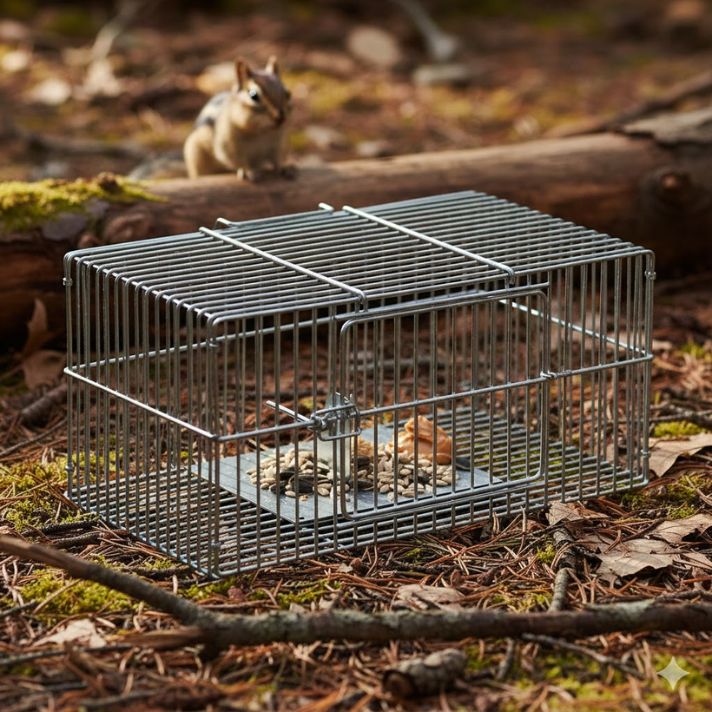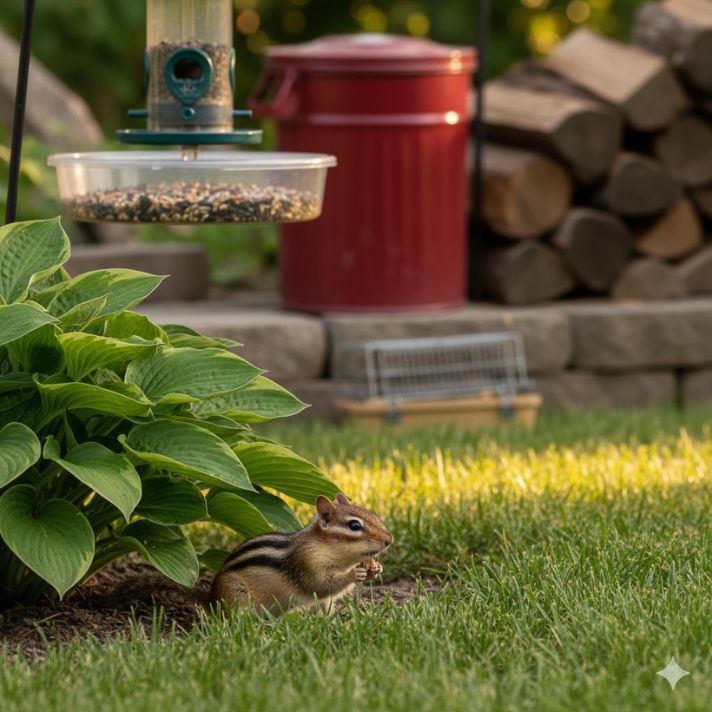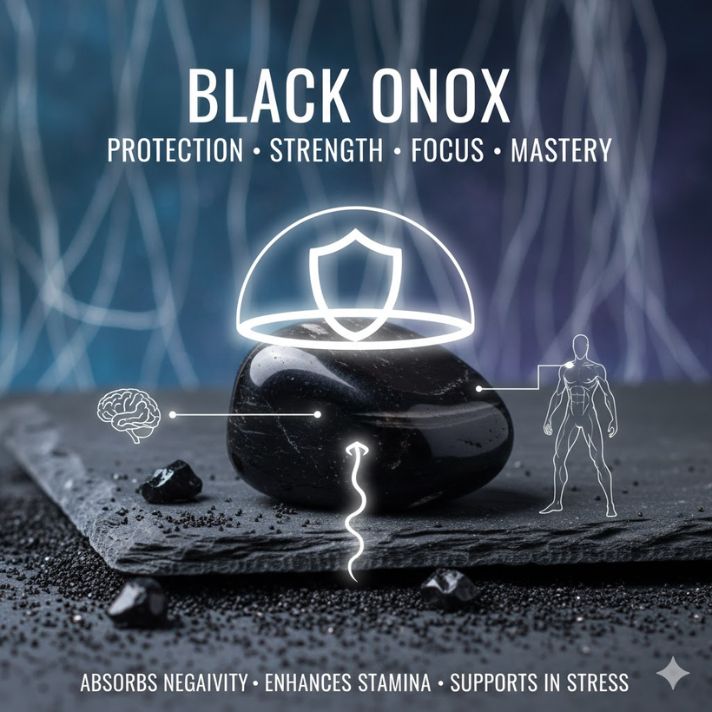The best way to remove chipmunks from your yard is by using humane chipmunk traps instead of poison or harmful chemicals. These bird-safe traps allow you to capture and relocate chipmunks safely without hurting them. It’s an eco-friendly pest control method that keeps your yard clean and protects other wildlife species.
Before setting a chipmunk trap, place it near bird feeders or areas with burrow holes. Use familiar birdseed or nuts as bait since chipmunks are already used to that food. This simple, non-lethal trapping method ensures quick results while maintaining a natural balance in your garden ecosystem and keeping your property pest-free.
Why would you want to remove Chipmunks from your yard?
You may want to remove chipmunks from your yard because their constant digging can cause damage to lawns, gardens, and even house foundations. These tiny rodents create underground burrows and tunnels that lead to small sinkholes or tripping spots. Over time, their growing population can attract other pests, making humane chipmunk control important for a safe and tidy yard.
My neighbor said I should use poison to take care of the chipmunk problem. What do you think?
Using poison for chipmunks may seem like an easy fix, but it’s dangerous for other wildlife. Birds, pets, or even owls can eat poisoned chipmunks and become sick. Instead, use humane chipmunk traps that let you relocate chipmunks safely. This method protects your yard ecosystem and keeps nature in balance.
Okay I see some folks using electronic rodent traps that kill their targets in an instant. How would these work for Chipmunks?
Electronic rodent traps are designed mainly for rats or mice, not chipmunks. They kill instantly, but chipmunks often ignore these devices. Also, they can be costly and need frequent recharging. For chipmunk removal, live traps work better since they allow ethical capture and release, keeping your yard pest-free without harming wildlife.
What trap should I use for catching chipmunks?

The best option is a Havahart-style live trap made for small rodents. These metal traps are durable, reusable, and safe for chipmunk control. Choose a two-door design for easy entry and exit. It’s an eco-friendly chipmunk removal method that helps you capture and relocate chipmunks without using poisons or chemicals.
What do you use for bait for chipmunks?
Chipmunks love birdseed, sunflower seeds, and nuts. Use the same food they already find under bird feeders to make the chipmunk trap more effective. Avoid sticky baits like peanut butter since it can make them cautious. Simple, familiar seed bait works best for safe and successful chipmunk trapping every time.
Where is the best place to set the chipmunk trap?
Place your humane chipmunk trap near bird feeders, burrows, or garden edges where chipmunks search for food. These spots naturally attract them, making the trap more effective. By positioning traps in their usual pathways, you’ll capture chipmunks quickly while keeping your yard clean and safe for birds.
How do I transport the trapped chipmunks once they’ve been captured?
After catching one, wear gloves and move the trap carefully. Place it in your car trunk on a piece of cardboard. Drive a few miles away to a wooded area or park, then open the door and let the chipmunk run free. This ensures safe and humane relocation without harm.
What are the top traps for removing Chipmunks from your yard?
The most effective options include Havahart traps, Catchmaster live traps, and AB Traps designed for small rodents. These reusable, humane traps are sturdy, easy to clean, and safe for other animals. They offer an eco-friendly chipmunk removal method that helps maintain balance in your yard and garden ecosystem.
Conclusion
In conclusion, the safest and most effective way to remove chipmunks from your yard is through humane trapping and relocation. Avoid using poisons or electronic traps that can harm other wildlife and pets. Instead, rely on Havahart-style live traps and use natural bait like birdseed or nuts.
Place traps near bird feeders or burrows for the best results. Relocate captured chipmunks to a safe natural area where they can live freely. By choosing eco-friendly pest control methods, you protect your yard, garden, and birdlife while keeping the environment balanced and cruelty-free. Responsible removal keeps nature and homeowners happy.
FAQ’S
1. What is the most humane way to remove chipmunks from your yard?
The most humane way is using live chipmunk traps that let you capture and relocate chipmunks safely without harming other wildlife or pets.
2. Why shouldn’t I use poison for chipmunks?
Poison for chipmunks can harm birds, pets, and other wildlife that eat them. It also causes bad odors when chipmunks die in hidden places.
3. What bait works best for catching chipmunks?
Use birdseed, sunflower seeds, or nuts as bait. Chipmunks recognize these foods, making trapping easier and more successful without using strong scents.
4. Where should I place a chipmunk trap?
Set the chipmunk trap near bird feeders, burrows, or paths where they often search for food. These spots naturally attract chipmunks for easy capture.
5. How far should I relocate trapped chipmunks?
Relocate trapped chipmunks at least two to three miles away in a wooded or park area so they won’t return to your yard.



